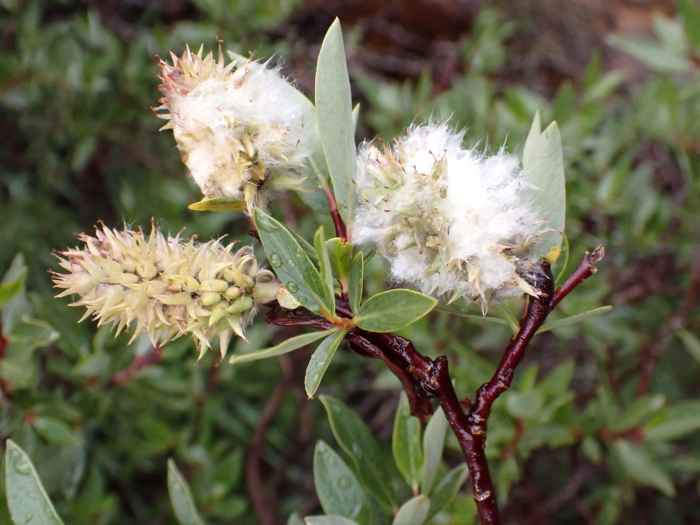Planeleaf Willow
(Salix planifolia)
Planeleaf Willow (Salix planifolia)
/
/

Chloe and Trevor Van Loon
CC BY 4.0
Image By:
Chloe and Trevor Van Loon
Recorded By:
Copyright:
CC BY 4.0
Copyright Notice:
Photo by: Chloe and Trevor Van Loon | License Type: CC BY 4.0 | License URL: http://creativecommons.org/licenses/by/4.0/ | Rights Holder: Chloe and Trevor Van Loon | Publisher: iNaturalist | Date Created: 2023-09-02T09:45:24-07:00 |

























Estimated Native Range
Summary
Salix planifolia, commonly known as planeleaf willow, diamondleaf willow, or tea-leafed willow, is a deciduous shrub native to the boreal forests, tundra, and alpine regions of northern and western North America, including most of Canada and the western United States. It is particularly adapted to cold, moist environments such as riverbanks, wetlands, and moist subalpine areas. This willow can vary greatly in size, typically reaching 3 to 30 feet in height, and is characterized by its slender form and oval to diamond-shaped leaves that are glossy green on the upper surface and sometimes exhibit silky hairs on the underside. The plant produces inconspicuous yellow or green catkins that bloom in late spring to early summer. The bark is smooth and gray, and it does not produce notable fruit or berries.
Planeleaf willow is valued for its ability to thrive in challenging environments and is often used for soil stabilization and riparian restoration projects. It is also appreciated by gardeners for its fine-textured foliage and its role in supporting wildlife, as it provides food and habitat for various species. In cultivation, it requires consistently moist soil and can tolerate a range of soil types, from clay to loam, as long as they are well-drained. It prefers full sun to partial shade. While generally low-maintenance, it can be susceptible to willow beetle infestations and fungal diseases such as willow scab and black canker.CC BY-SA 4.0
Planeleaf willow is valued for its ability to thrive in challenging environments and is often used for soil stabilization and riparian restoration projects. It is also appreciated by gardeners for its fine-textured foliage and its role in supporting wildlife, as it provides food and habitat for various species. In cultivation, it requires consistently moist soil and can tolerate a range of soil types, from clay to loam, as long as they are well-drained. It prefers full sun to partial shade. While generally low-maintenance, it can be susceptible to willow beetle infestations and fungal diseases such as willow scab and black canker.CC BY-SA 4.0
Plant Description
- Plant Type: Shrub, Tree
- Height: 6-30 feet
- Width: 6-20 feet
- Growth Rate: Rapid
- Flower Color: N/A
- Flowering Season: Spring, Summer
- Leaf Retention: Deciduous
Growth Requirements
- Sun: Full Sun, Part Shade
- Water: Medium
- Drainage: Fast, Medium
Common Uses
Bank Stabilization, Erosion Control, Low Maintenance, Water Garden
Natural Habitat
Boreal forests, tundra, and alpine regions
Other Names
Common Names: Diamond Willow, Flat-leaved Willow, Mountain Willow, Plainleaf Willow, Tea-Leaf Willow, Tea-Leaved Willow, Diamond-Leaved Willow, Plane-Leaved Willow
Scientific Names: , Salix planifolia, Salix chlorophylla, Salix chlorophylla var. monica, Salix chlorophylla var. nelsonii, Salix chlorophylla var. pychnocarpa, Salix discolor, Salix monica, Salix nelsonii, Salix pennata
GBIF Accepted Name: